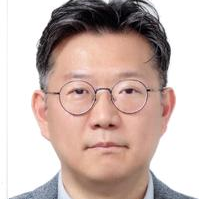Advances in Titanium Alloys and Manufacturing and Processing Technologies
A special issue of Metals (ISSN 2075-4701). This special issue belongs to the section "Metal Casting, Forming and Heat Treatment".
Deadline for manuscript submissions: closed (30 June 2022) | Viewed by 4942
Special Issue Editors
Interests: titanium; manufacturing; electrically assisted; caliber rolling
Special Issue Information
Dear Colleagues,
Titanium alloys have been used in a variety of important industries including the aerospace, defense, energy plants, petrochemicals, transportation, and biomedical fields and in consumer goods. Such a wide application arises from the high specific strength, excellent corrosion resistance, and biocompatibility of titanium alloys. Nevertheless, titanium alloys have a few drawbacks such as a lack of workability, low room temperature formability, and high costs as compared with steels and aluminum alloys. Many researchers have endeavored to overcome these limitations either by developing a novel alloying system or by optimizing the processing parameters of conventional thermomechanical processes. Furthermore, researchers have focused on various ways of forming titanium alloys including not only traditional methods (e.g., sheet forming, forging, and superplasticity) but also innovative methods (e.g., additive manufacturing, cryogenic forming, and electrically assisted forming).
In this Special Issue, we welcome articles that focus on titanium alloys in terms of their design, smelting, melting, plastic deformation processing, welding and joining, microstructure control technologies to overcome its shortcomings, and especially their innovative manufacturing processes that can both reduce the price of titanium alloys and maximize their properties.
Prof. Dr. Taekyung Lee
Dr. Jong-Taek Yeom
Guest Editors
Manuscript Submission Information
Manuscripts should be submitted online at www.mdpi.com by registering and logging in to this website. Once you are registered, click here to go to the submission form. Manuscripts can be submitted until the deadline. All submissions that pass pre-check are peer-reviewed. Accepted papers will be published continuously in the journal (as soon as accepted) and will be listed together on the special issue website. Research articles, review articles as well as short communications are invited. For planned papers, a title and short abstract (about 100 words) can be sent to the Editorial Office for announcement on this website.
Submitted manuscripts should not have been published previously, nor be under consideration for publication elsewhere (except conference proceedings papers). All manuscripts are thoroughly refereed through a single-blind peer-review process. A guide for authors and other relevant information for submission of manuscripts is available on the Instructions for Authors page. Metals is an international peer-reviewed open access monthly journal published by MDPI.
Please visit the Instructions for Authors page before submitting a manuscript. The Article Processing Charge (APC) for publication in this open access journal is 2600 CHF (Swiss Francs). Submitted papers should be well formatted and use good English. Authors may use MDPI's English editing service prior to publication or during author revisions.
Keywords
- titanium
- titanium alloy
- low cost
- manufacturing
- plastic forming
- welding and joining
- microstructure control
- thermomechanical processing
- additive manufacturing






